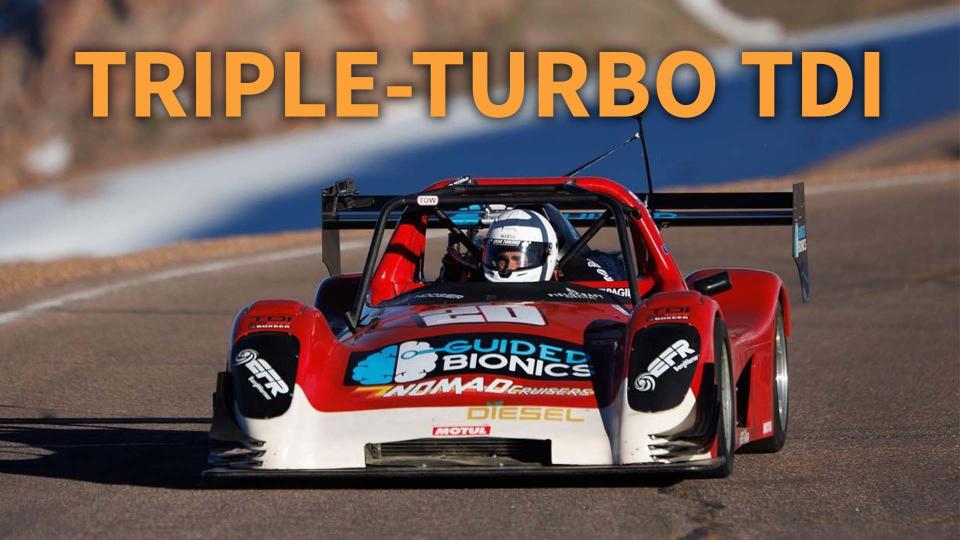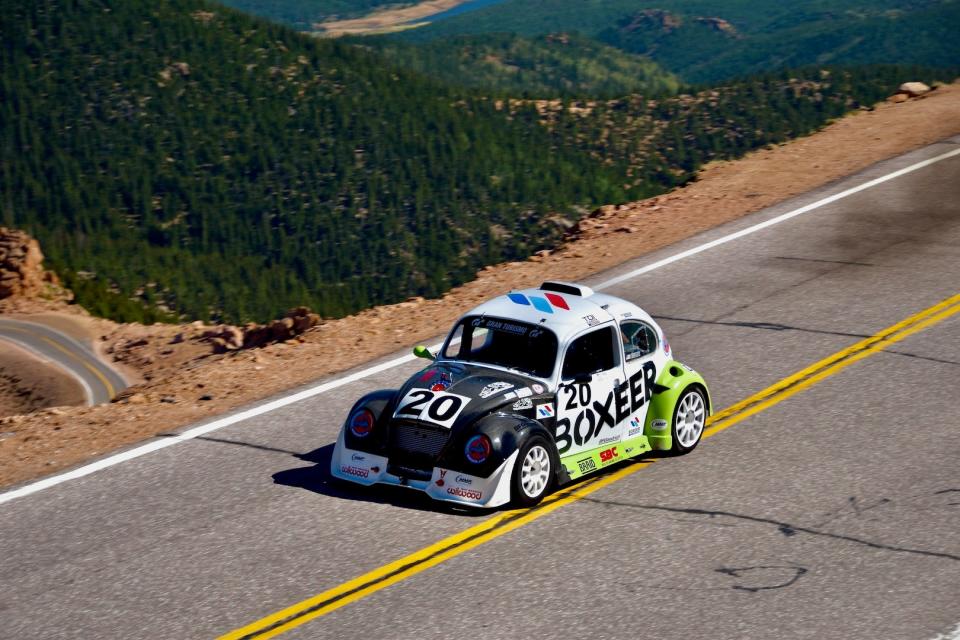New Pikes Peak Diesel Record-Holder Uses Outrageous Tri-Turbo VW Four-Cylinder

When a Cummins-powered 1949 Ford F-1 pickup truck broke Pikes Peak's diesel record in 2020, it kicked off a sooty, whistling arms race at the world's most extreme hill climb. This year, the record fell in dramatic fashion as the groundbreaking Ford was destroyed in a tumble down a cliff, and its time was trounced by a driver that finished a mere 1.042 seconds behind it in 2020. That driver was Grégoire Blachon, who returned to the mountain this year with a prototype powered by a tri-turbo Volkswagen four-cylinder diesel that's built like no other engine on earth.
Blachon, an engineer by trade, told The Drive he has raced Pikes Peak for a decade now—and only races Pikes Peak. He debuted in 2013 with a diesel Subaru Impreza, and returned in 2020 with a classic VW Beetle. It was no ordinary Bug, either, as it had a 2.0-liter VW TDI with compound turbos, linked to a seven-speed Porsche PDK transmission. It proved to be more power than the Beetle could handle by toasting its brakes, slowing down Blachon just enough for the '49 Ford to take the diesel record by a slim one-second margin.


That meant any improvement at all would put Blachon in the running for the record, and improvements he brought. Though he couldn't bare his fangs in 2021 or 2022 due to weather problems, Blachon showed up in 2023 with a Radical SR prototype, powered by an improved version of the Beetle's diesel engine.
Output rose to 440 horsepower thanks to the addition of a third turbo, plumbed in a mind-bogglingly complex fashion to smooth throttle response. The setup begins with a tiny 24-millimeter turbo, which generates 20 psi of boost at idle and maxes out at 45 psi. When its turbine reaches 240,000 rpm—that's 4,000 revolutions per second—its variable-geometry vanes open up, and it redirects its wastegate into the second, 45-mm turbo. It's already spooled by this point, and when it hits 165,000 rpm it repeats the process to feed the third, 71-mm snail. This all results in 70 psi of peak boost.

 Yahoo Autos
Yahoo Autos 